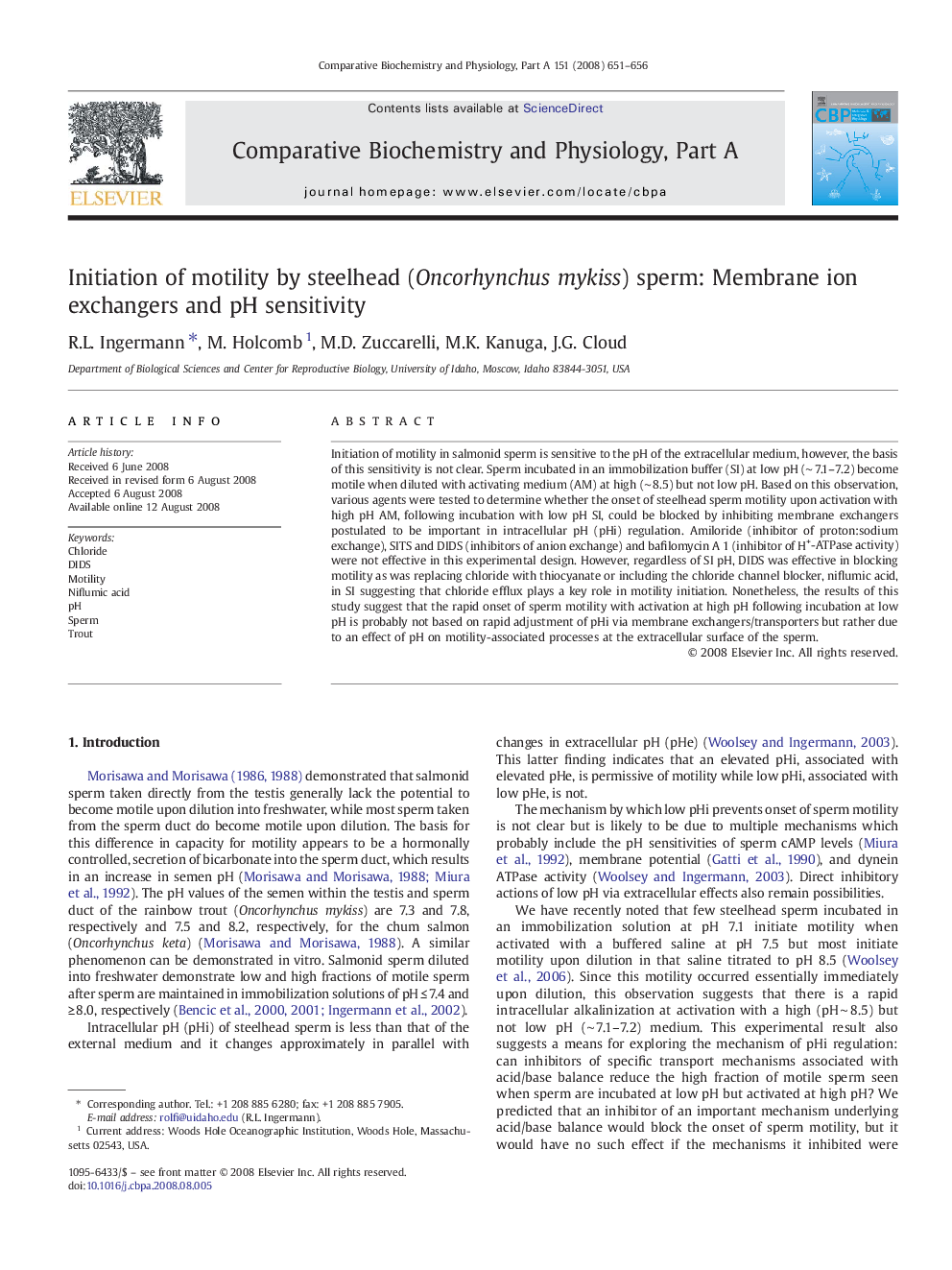| Article ID | Journal | Published Year | Pages | File Type |
|---|---|---|---|---|
| 1973400 | Comparative Biochemistry and Physiology Part A: Molecular & Integrative Physiology | 2008 | 6 Pages |
Abstract
Initiation of motility in salmonid sperm is sensitive to the pH of the extracellular medium, however, the basis of this sensitivity is not clear. Sperm incubated in an immobilization buffer (SI) at low pH (â¼Â 7.1-7.2) become motile when diluted with activating medium (AM) at high (â¼Â 8.5) but not low pH. Based on this observation, various agents were tested to determine whether the onset of steelhead sperm motility upon activation with high pH AM, following incubation with low pH SI, could be blocked by inhibiting membrane exchangers postulated to be important in intracellular pH (pHi) regulation. Amiloride (inhibitor of proton:sodium exchange), SITS and DIDS (inhibitors of anion exchange) and bafilomycin A 1 (inhibitor of H+-ATPase activity) were not effective in this experimental design. However, regardless of SI pH, DIDS was effective in blocking motility as was replacing chloride with thiocyanate or including the chloride channel blocker, niflumic acid, in SI suggesting that chloride efflux plays a key role in motility initiation. Nonetheless, the results of this study suggest that the rapid onset of sperm motility with activation at high pH following incubation at low pH is probably not based on rapid adjustment of pHi via membrane exchangers/transporters but rather due to an effect of pH on motility-associated processes at the extracellular surface of the sperm.
Related Topics
Life Sciences
Biochemistry, Genetics and Molecular Biology
Biochemistry
Authors
R.L. Ingermann, M. Holcomb, M.D. Zuccarelli, M.K. Kanuga, J.G. Cloud,
